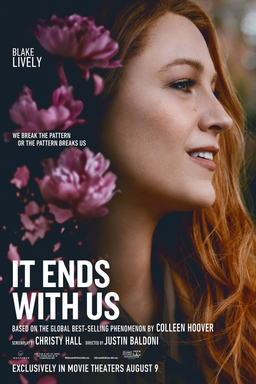

To be honest, it was not the movie itself that made me watch this movie. It was the ongoing Hollywood gossip about the feud between the main cast. I was curious to see whether personal tensions would affect their performances and to what extent an actor can embody a role while suppressing real-life emotions.
However, as the movie unfolded, I found myself drawn in for an entirely different reason. Instead of just observing the acting, I became immersed in the story’s emotional depth and its powerful depiction of domestic abuse. What I initially thought would be a casual viewing experience turned into something deeply thought-provoking, challenging my own perceptions of abusive relationships.
The film revolves around Lily Bloom, a young woman exposed to domestic abuse by her father towards her mother during her childhood. She moved to Boston to open her very own floral shop, her lifelong dream. Here she encounters Ryle Kincaid, and despite his reluctance to commit to love, they start a relationship.
While in their relationship, Lily comes across Atlas, her first love now a successful chef in Boston. This reunion stirs jealousy in Ryle, and his violent and abusive tendencies surface. Lily struggles because while it is true that Ryle has hurt her it is also evident that he loves her. After Ryle’s abuse, Lily runs away and finds out that she is pregnant. The birth of her daughter makes her decision clear; the line of abusive relationship has to stop with Lily and Ryle, hence the title It Ends With Us.
I realize now that my image of domestic abuse was an unrealistic portrait of a black-and-white situation. In this picture, the perpetrator abused the victim with the clear intention of hurting the victim, and there was no bond or emotion between the two roles. In real life, black-and-white situations like these are rare, and the world is filled with various shades of gray.
At first, Ryle’s abusive traits could be seen as an accident. The first time he hit her, he burned his hand from the smoking hot oven. When Lily tries to help him, he hits her. The urgency of the situation and the shock keep her from perceiving the situation clearly, which could be seen from the shaking and blurry scene of the film shot from Lily’s point of view. Naturally, the audience too, could not receive the situation clearly, and the scene could easily be seen as an accident, like how Lily was convinced.
The second time, Lily is pushed down the stairs, while a fight between Ryle and Lily escalates. This situation is also portrayed with a blurry and disoriented perspective, and one might think ‘he did not mean to push her down the stairs.’ Or ‘he did not mean to hurt her that badly.’
The third time, the scene depicts the situation more clearly. Ryle tries to assault Lily sexually, and she escapes from him feeling threatened. This is when she makes her decision to leave Ryle. It Ends With Us takes us through the plot from Lily’s eyes and shows us that when the perpetrator is someone you love and someone you are committed to, the situation is not as clear as it seems. If we had seen the situation as an outsider, the situation would be clear; Ryle is clearly the bad guy, and Lily should leave Ryle. Simple. But by experiencing their history and seeing how Ryle loves Lily dearly from Lily’s point of view, the audience can relate to Lily’s hesitation to leave him.
The movie might have received mixed reviews, but personally, the gradual depiction of domestic abuse and the effort to capture the character’s perspective of the situation in the film have helped me understand that various forms of domestic abuse exist and my perspective towards such situations.


